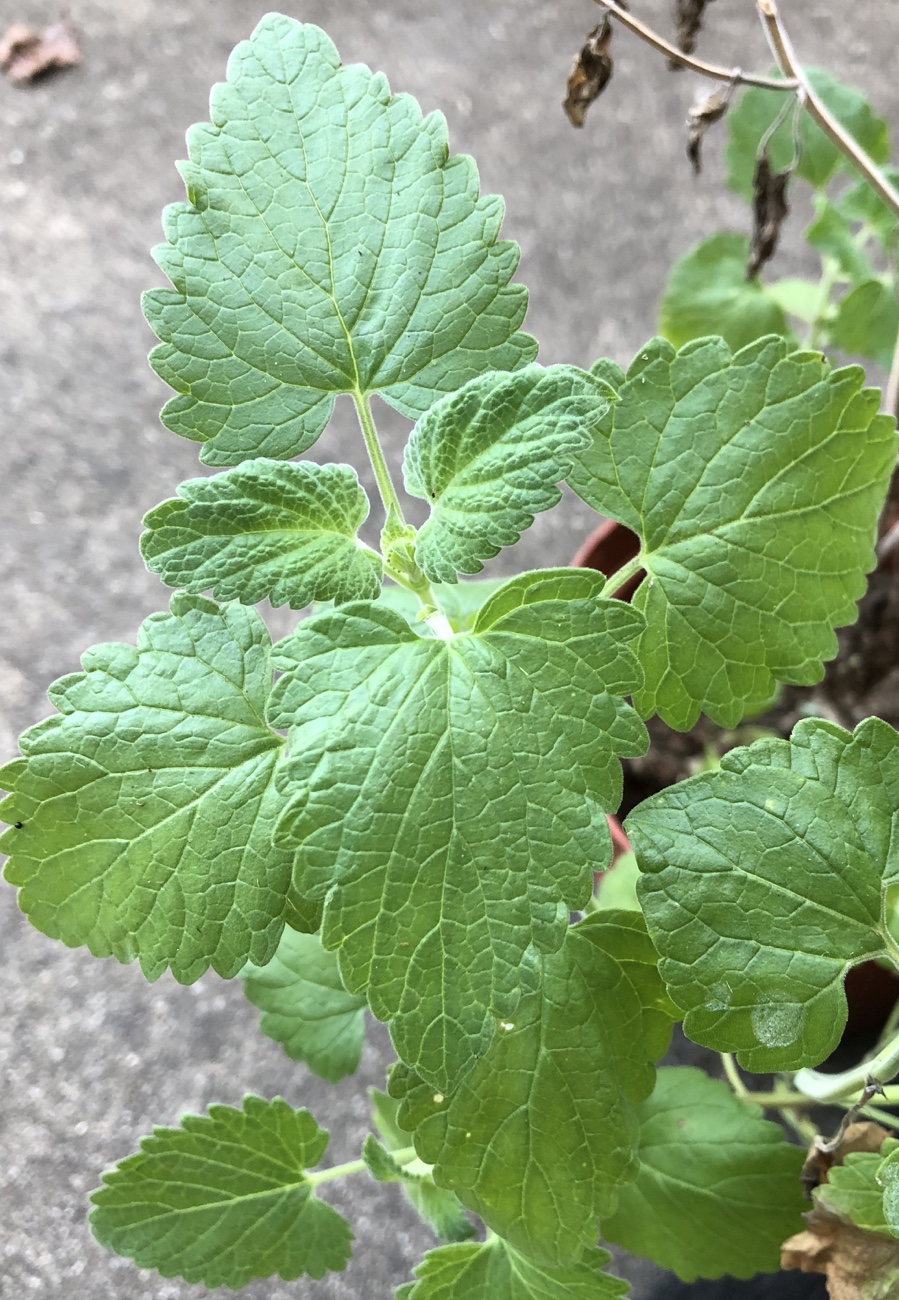
Why preserve? Fundamentally, it’s about finding ways to extend the “shelf life” of edibles: fermenting, drying, pickling, canning, freezing, and curing are some of the common ways of preserving food. In this case, I made jelly because it’s an economical way to have this delightful treat available even when fresh leaves may not be…like in the dead of winter.
I adore Melissa officinalis – the beautiful, useful, and oh-so-fragrant lemon balm. Though I started by transplanting one wild-growing volunteer (from an area that became swampy), I now have several plants of various sizes. Propagating from cuttings generally worked well, and once established in a pot, the cuttings grew enthusiastically. I did learn, however, that these plants prefer at least partial shade – the intense summer sun crisped a couple up before I realized the problem and moved them.
They’ve recently bloomed, allowing me to harvest some tiny seeds for planting later, but blooming also means fewer resources directed to the rest of the plant. Fortunately, though they’re winding down for the season, there are still plenty of bright green leaves left to make a special jelly.
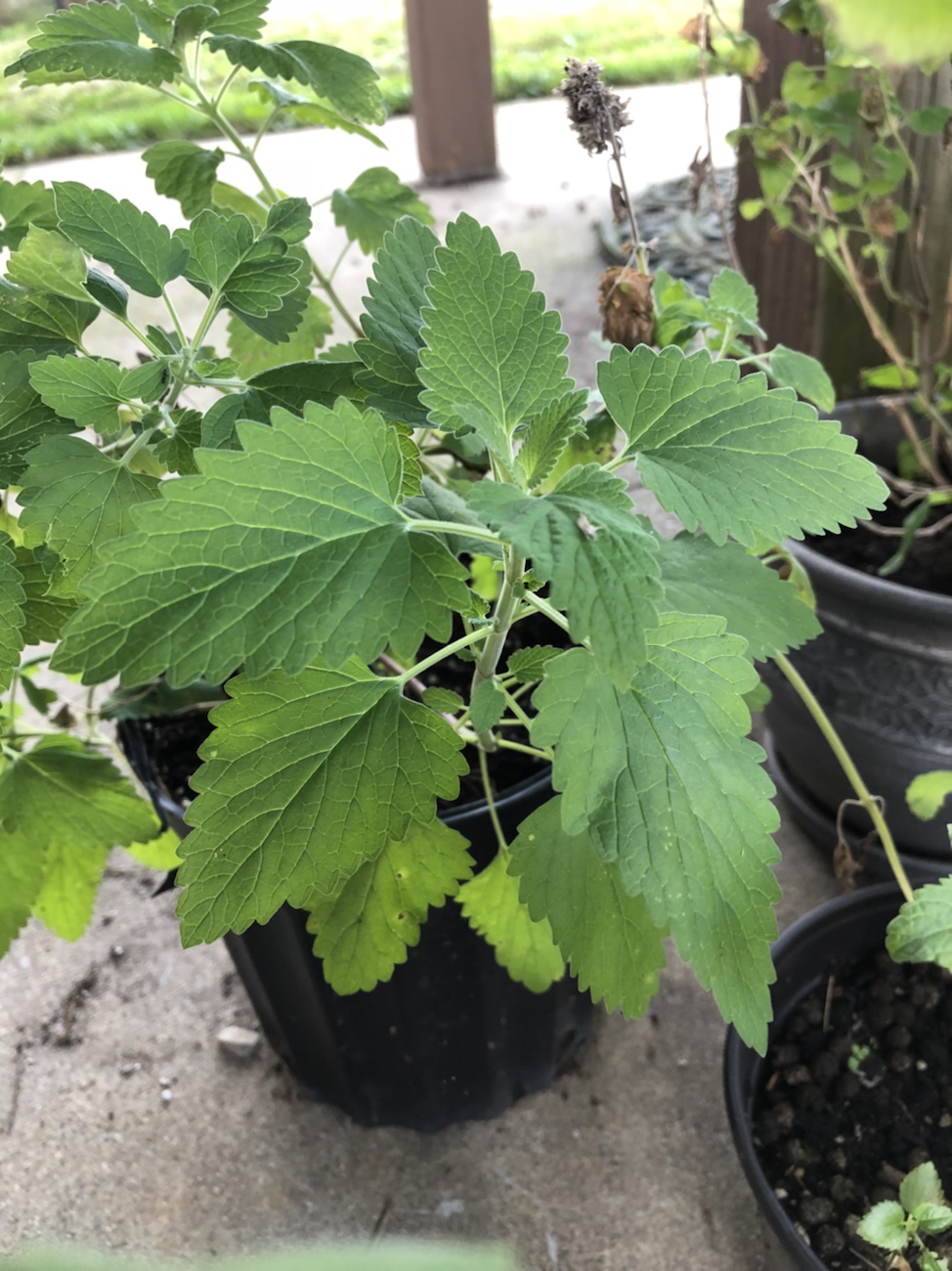
Among its medicinal purposes, lemon balm is used for anxiety and insomnia. It makes a wonderfully soothing herbal tea (even tastier with a little honey) and lemon balm syrup adds an appealing lemony-herbal note to beverages, like Skeeter Pee.
Making jelly is pretty easy, but I’ve come to realize that it’s time to get the proper tools to do the job. Yes, I have a stock pot, canning jars, and rings/lids…but I’ve been using metal tongs to remove hot jars and lids from the hot water, and have been scalded. A more prudent approach would be to use rubber-coated (and grippy!) tongs specially designed for grasping jars, as well as a lifting basket to safely lift the jars out of the water. Sometimes, improvising or just making do with what you have makes sense – and sometimes, it just doesn’t; the aforementioned tools are already on their way.
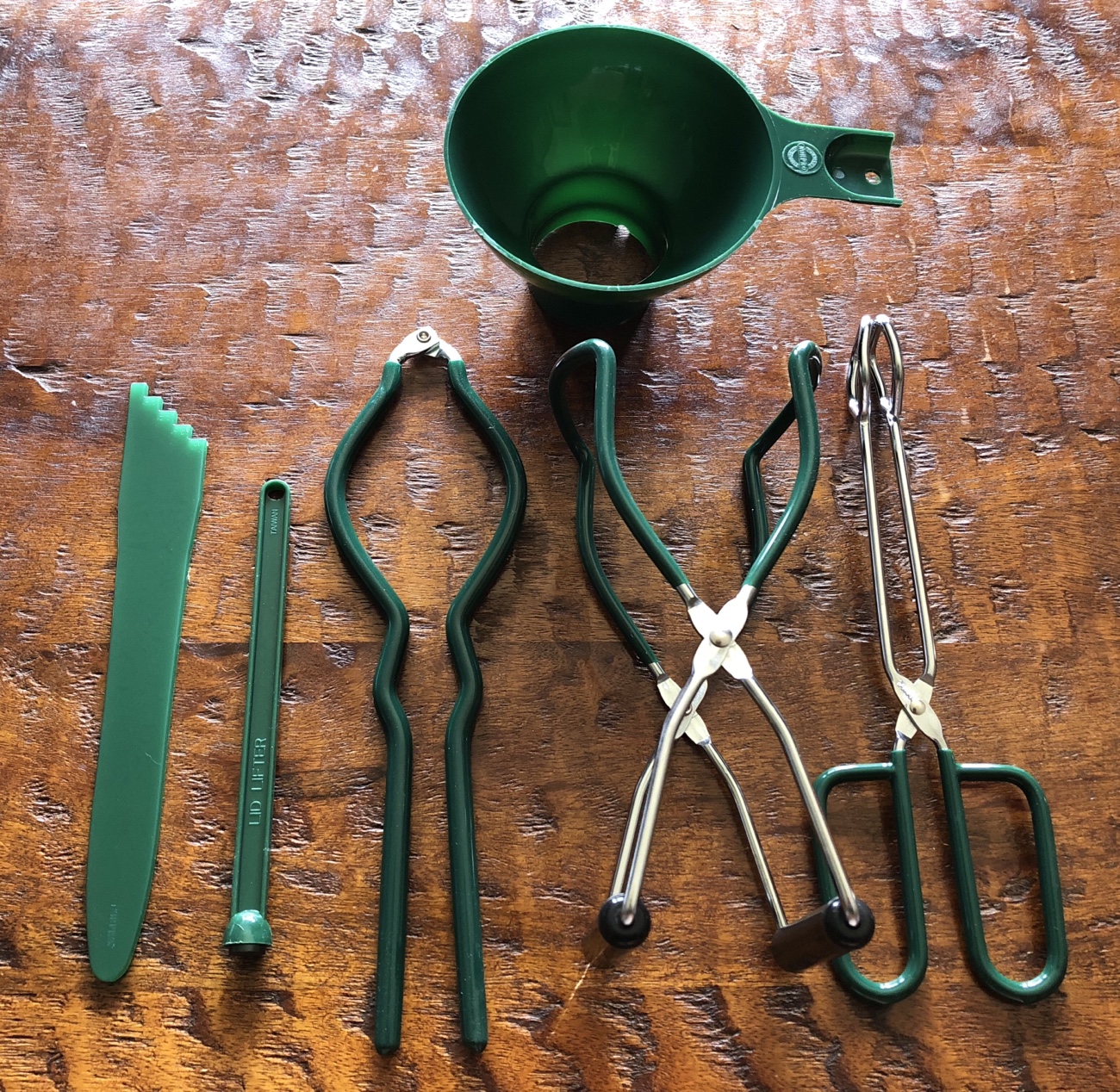
This particular recipe calls for a cup of packed, fresh lemon balm leaves to be chopped and steeped in hot water for 10 minutes, then strained. To this tea, sugar, fresh lemon juice, and pectin is added and brought to a boil (while stirring). Lesson learned: don’t try to use the same pan that the leaves are steeped in – use a larger pan that will safely contain the boiling sugar mixture or risk having to transfer the hot, sticky liquid to a larger pan mid-boil.
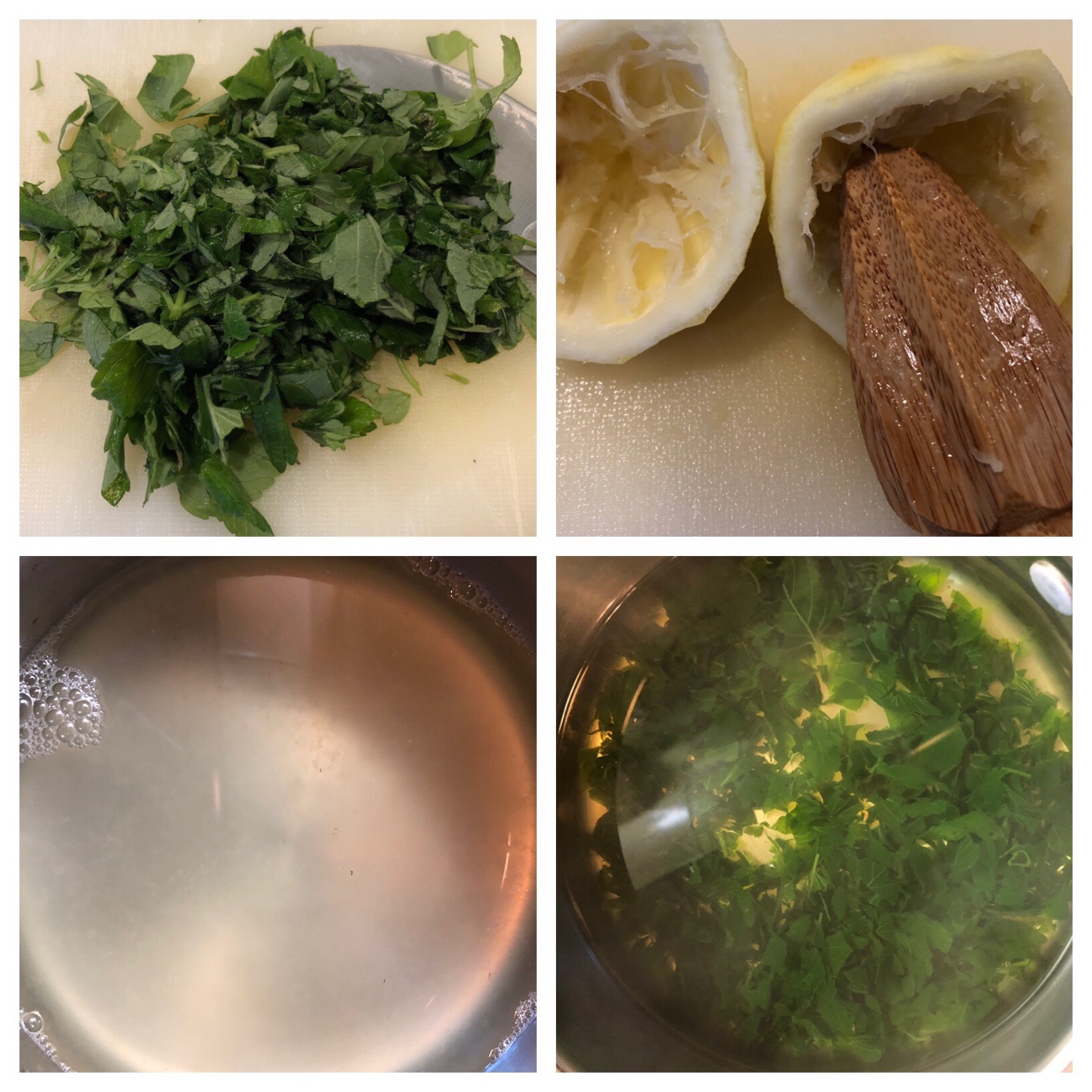
The hot jelly is then – very carefully – poured into pre-sterilized jars and sealed. I test the jars after about an hour to ensure that they’ve sealed properly (a must for food safety); while it is possible to re-seal jars that don’t seal correctly, but I just put the one jar that had an improper seal into the fridge.
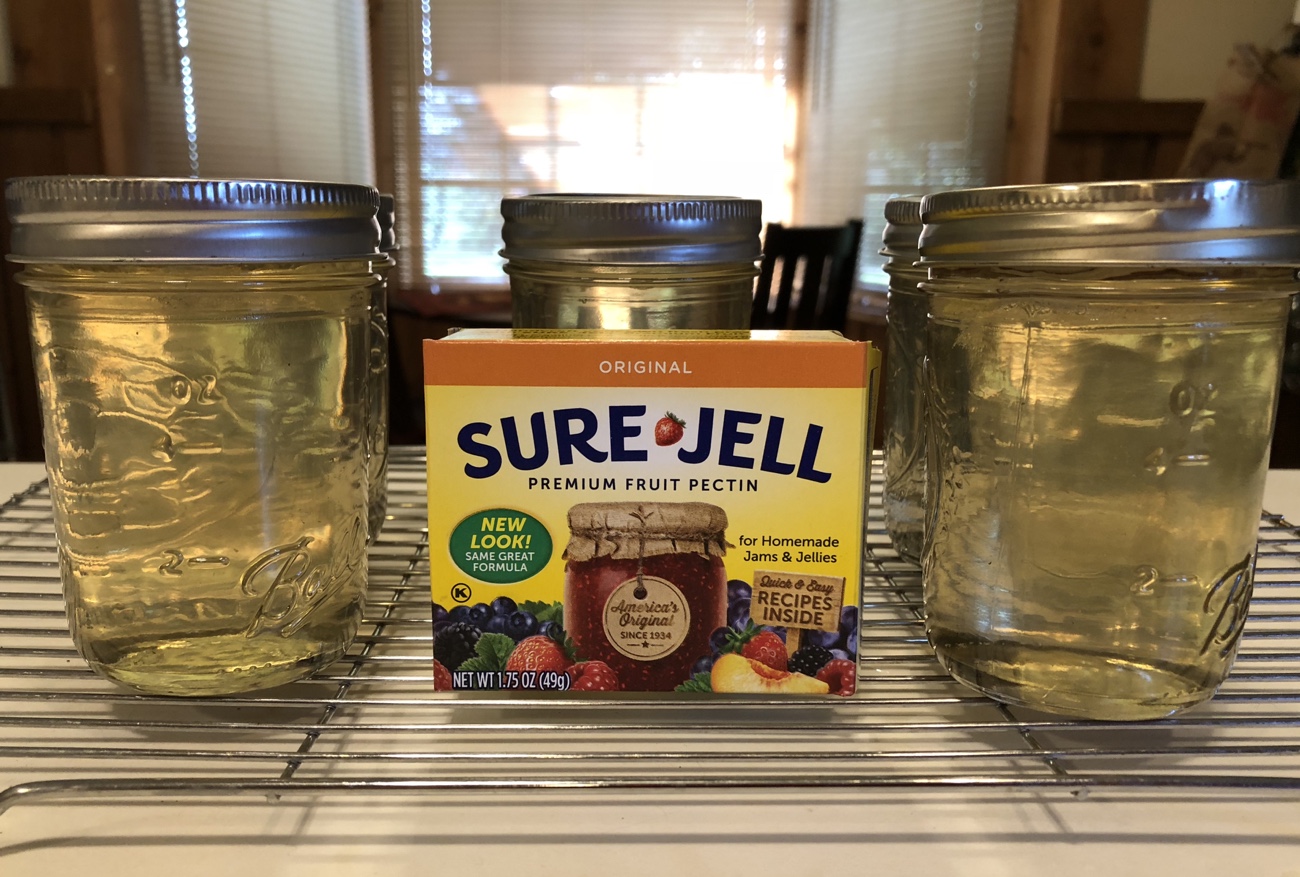
The finished jelly, enjoyed on toast this morning, has a light, honeyed citrus flavor with a subtle herbal note. I was hoping for more pronounced lemon balm flavor, so I think I’ll use more leaves and let it steep longer when making future batches.

Learning to preserve food is a skill with very practical applications, and you get to enjoy the “fruit of your labors”! I wear my preserving t-shirt proudly, and – every once in a while – someone else finds it funny, too.
Want to learn more about preserving food? Find helpful information at the National Center for Home Food Preservation.

Comments are closed.